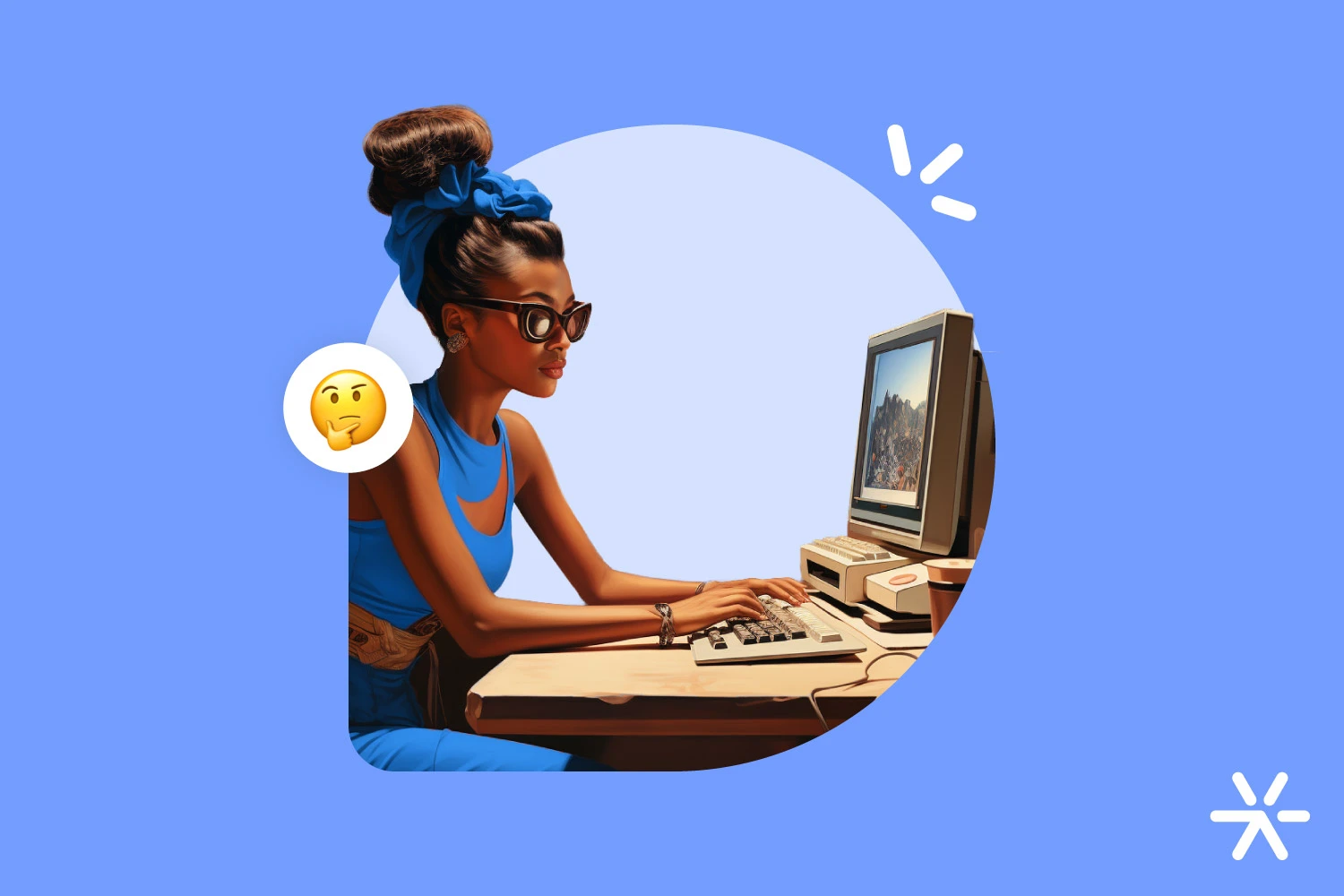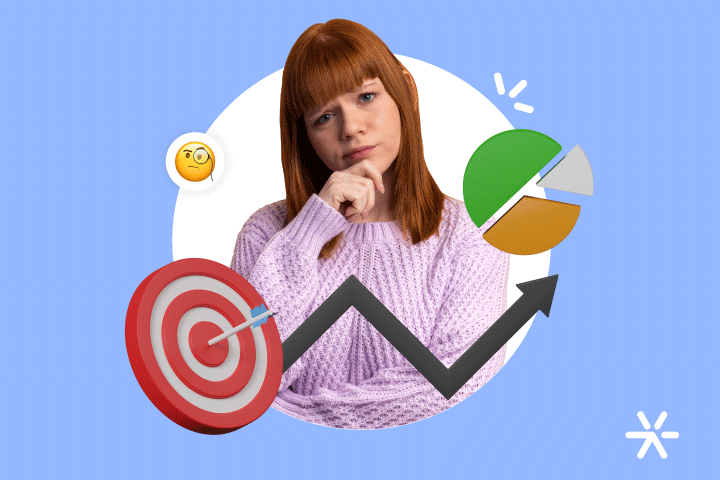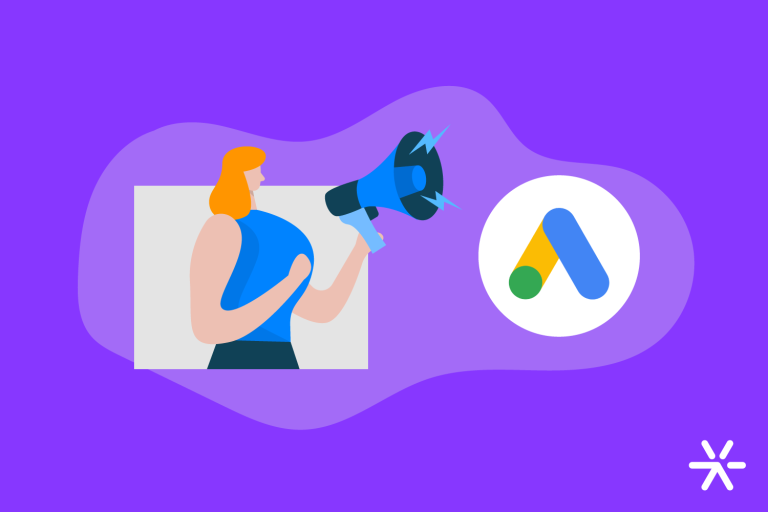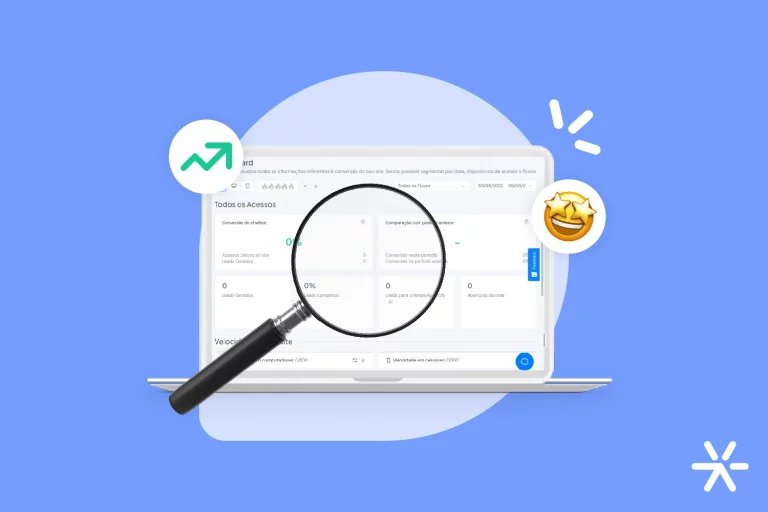The Positive Aspects of Artificial Intelligence. And the other ones.
We need to talk about the positive aspects of Artificial Intelligence. And about the others as well.
And “the others” here in this case are less about Nicole Kidman in the 2001 movie that traumatized an entire generation and more about the negative aspects of AI.
To start the text well, we need to understand that there are two currents of thought about AIs today: the sensationalists and the rationalists.
The sensationalists work with fear: soon AIs capable of doing everything humans do, but much better, will emerge. The world no longer needs humans, etc.
The realists are more moderate: we need to understand the positive points of Artificial Intelligence and the negatives as well. But without wasting time on the end of the world, which if it comes, won’t be because of it.
The truth lies in moderation. That’s why our stance today is the middle ground: what’s good and what’s bad about AI? Let’s find out together now. But first…
What Exactly is AI?
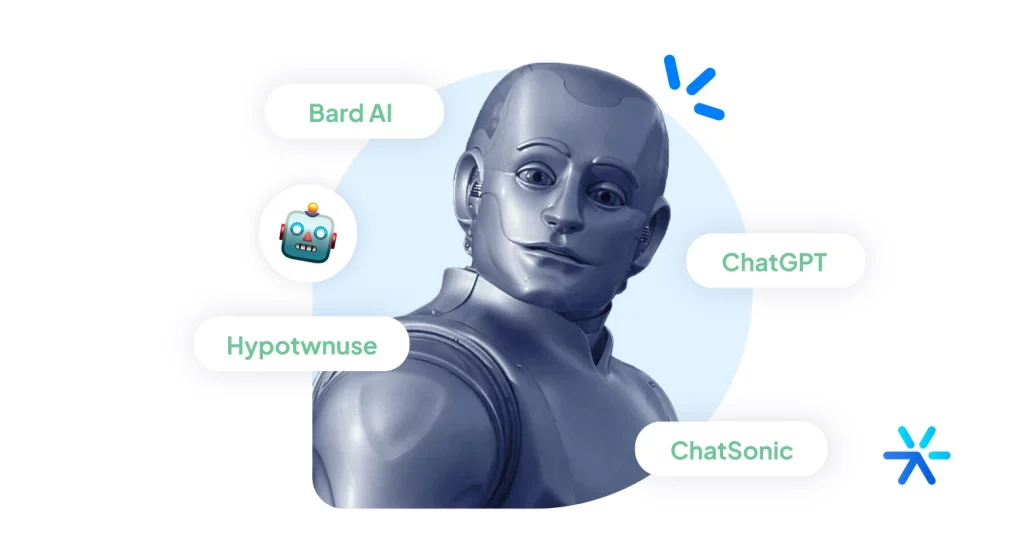
Artificial Intelligence has several facets.
There’s conceptual AI, like the one in movies — a software capable of gathering information about everything that exists in the world and beyond, using quantum processing power to interpret this data and arrive at conclusions more informed than humans.
But there are also Artificial Intelligence services that we encounter in marketing every day: social media algorithms, for example.
Chatbots, Smart Shop Windows, Spotify recommendations, smart drones, factory automation, machine learning, etc.
In this last category fall the new AIs that the market brought between 2020 and 2023: Generative Artificial Intelligence.
This is a completely new type of AI that on the surface seems like a system capable of thinking on its own — and taking over the world.
But Generative Artificial Intelligence isn’t as scary as it sounds. It’s almost like an algorithm, but with different configurations. Its specialty is interpreting questions and orders from users and delivering approximate results of what they asked for.
Today, the most popular generative AIs is ChatGPT, which produces text, and Midjourney, which produces images. We have some texts that delve deeper into the subject. See the links:
🤖 What is Artificial Intelligence and How to Apply it to your Business
🤖 AI in Digital Marketing – 30 useful examples
🤖 18 image creating AI tools with results and examples!
🤖 How to Use ChatGPT? 10 Simple Uses and 7 Advanced Commands
What are the positive and negative points of artificial intelligence?

Like everything new in the world, it’s natural that we take some time to truly understand its advantages and disadvantages.
Understanding the positive and negative points of Artificial Intelligence is quite complex, as we need to first understand the technology, then the tools. And everything happened very quickly.
On the technological side, since 2018, we’ve had eight Natural Language Processing (NLP) models:
- BERT, from Google;
- BARD, also from Google;
- GPT-2;
- T-NLG, Microsoft’s Turing;
- GPT-3;
- Switch Transformer, also from Google, but Open Source;
- GPT-3.5 Turbo;
- GPT-4.
And these technologies are just the language ones! There are still several others in development that deal with image production, machine vision, voice production, film manipulation, etc.
The technical and marketing aspects are increasingly mixed. Terms are confused, technical possibilities become reality. With this, the positive and negative points of Artificial Intelligence become increasingly exaggerated.
Let’s take a deep breath now and try to understand what the real advantages and risks of AI are, looking at its positive and negative points from a skeptical perspective, based on data.
And then we’ll discuss the advantages and disadvantages of AI, looking at society as a whole.
Positive points of AI
Artificial Intelligence has several interesting positive points to address.
In the media and in marketing, some of them are quite exaggerated. “The machine that writes books” or “the robot that will replace humans” are common headlines on news sites and even on TV.
To better understand these positive points of AI, we need a more skeptical and less hopeful view. By evaluating what we have today, we can reach more accurate conclusions.
Here’s the list:
Automation of repetitive tasks
This is something that Artificial Intelligence is already doing today, on a larger and smaller scale.
On a smaller scale through simple applications. Looking at digital marketing, we can mention post scheduling, monitoring mentions on social media, analysis of paid media metrics, translation, typesetting, spelling checking, etc.
Some of these tasks have been automated since the beginning of the last decade.
On a larger scale through the creation of images using Midjourney, creation and optimization of texts through ChatGPT, creation of advertising Deep Fakes (like the Elis Regina commercial at VW), front-end and back-end programming, etc.
These last automations may not seem so repetitive, but in a production context, they often are.
Finding images, for example, is a task that involves time and effort from art directors who could be focused on more creative work.
This is an undeniable positive point of Artificial Intelligence. But it’s not the only one. Keep reading, I have four more to show you:
Brainstorming partner
ChatGPT is a great partner for finding material ideas, whatever they may be.
It can bring ideas for an email, for example, following the AIDA pattern of copywriting.
Or it can offer you practically infinite suggestions for social media posts, creating an entire editorial calendar in seconds.
You can also use ChatGPT as a general, broader partner, helping you throughout the day to refine specific ideas. “How can I improve this text” or “how can I turn this email into a blog post?” are very common prompts.
But, of course: everything with its limitations. In the second part of this topic, we’ll address the negative points more deeply.
For now, it’s quite obvious that ChatGPT can act very well as a partner in people’s daily lives in various areas. And, in many cases, it empowers businesses that, without it, would have great difficulties in producing material.
Creation of cheaper material for small businesses
There are many businesses that, starting from scratch, find themselves without the budget for the necessary investment in advertising.
And we’re not even talking about paid media or performance marketing here. Many businesses struggle with hiring the two most basic professionals for advertising: the art director and the copywriter.
Today, these two professionals cannot be replaced by AI? Definitely not. But at the same time, AI can be a great “fix” for those who produce simple materials, such as flyers, billboards, social media posts, etc.
The result won’t be the best in the world — more on that later. But, at the same time, not having the best in the world is infinitely better than having nothing.
Reference aggregator
This use is much more specific and, despite developing now, is not yet so popular.
Companies are creating applications that use ChatGPT to aggregate textual references. For example: a research laboratory that incorporates its entire database into an application that uses the ChatGPT API.
Or the case of Deloitte, which created a Chatbot to make searching in the institutional Wiki easier and more to the point.
In the artistic field, DALL-E 2 and Midjourney can also do the same service. Instead of searching Google for “images of train stations from 1945” and looking at each one, you can ask the AI to generate several images with that parameter.
These are positive points of Artificial Intelligence, but they also have their negative side, which we’ll explore shortly. Just one more topic for now:
Practical examples of things you’ve never seen
Among the positive points of Artificial Intelligence, this is probably one of the least “media-friendly” but one of the most important.
For writers, it can be difficult to find clear examples of literary and advertising techniques in natura.
An obscure copywriting technique, for example, that few copywriters used for a short period of time, can only be found in very specific books.
Images also fall into this category. People who work with very specific subjects may have problems finding reference images. It may be that this image doesn’t even exist.
AI can render approximations in these cases. And in less extreme cases too: transporting a product that was discontinued in 1950 to a modern shelf, for example.
The system can learn
This is one of the most promising positive points of Artificial Intelligence of all.
Today, it’s already possible to take the first steps in machine learning with ChatGPT itself. You can create an application with the integrated language model and feed it with a specific database.
And from this database, you can have much more accurate answers than the standard ChatGPT, which everyone has access to, delivers.
This alone is a great revolution, with applications in various fields: research, journalism, database organization, etc.
All research today works in a very similar way, from academic to journalistic: gathering sources, heavy reading, and interpretation of data.
These steps can be circumvented with Artificial Intelligence, which speeds up the process and ensures standardization in the message transmitted.
This already happens at Leadster today, by the way. We have ChatGPT integrated into our platform, and it can read and understand the most accessed pages of your website.
Negative points of A.I.
Artificial Intelligence also has several negative points that need to be taken into account, mainly for you to have a more realistic expectation of what the tools deliver and what they don’t.
And this is something that the market hasn’t been doing recently. The positive points of Artificial Intelligence are quite exaggerated. And the negative points are exaggerated to an apocalyptic level.
The truth, as we talked a little further up in the text, lies somewhere in the middle ground. As we’ve already seen the positive points of Artificial Intelligence, it’s time to focus a little more on its negative aspects: what it can’t do.
After this topic, our focus will turn to the advantages and disadvantages of Artificial Intelligence in society as a whole, okay?
Errors and hallucinations
At the time of writing this text, the most used and developed commercial Artificial Intelligence is ChatGPT, which uses the GPT-4 language model – the famous “paid ChatGPT”.
When GPT-4 was announced and even today, one of its functionalities was “fewer hallucinations”. Notice: it’s not zero hallucinations. It’s less.
Artificial Intelligence models are built from stochastic methodologies: they start from a large random agglomeration and refine their results based on the probability of them being the “right answer”.
For example: you want ChatGPT to explain to you whether the Ukraine war was caused by NATO or Putin. Its response starts with the letter A. There is a high probability that the next word will be “war”. And the next one “in” and the other “Ukraine”.
However, this model is completely different from how a human thinks. When the question is asked to a high school geography teacher, he already knows the answer before saying the first “a”.
ChatGPT doesn’t know. It refines its response through word-by-word comparisons. In the case of the example, it will probably deliver a milder response, such as “it’s debatable”.
The problem with hallucination is when ChatGPT’s response is okay for this stochastic interpretation: the prompt was met with the result, so for the system, everything is fine. Only the answer is wrong.
You will encounter several hallucinations while using ChatGPT. One of the most classic is asking it to say if a text was produced by AI or not.
This is such an open question that the language model, not having the ability to answer with certainty, ends up relying 100% on the stochastic model.

Focus on a future that takes time to arrive
This is a negative point of Artificial Intelligence not so related to the tool itself, but with the business model and marketing of companies offering and financing the services.
The issue of hallucinations, for example, that we discussed just above. The question is: when will AIs stop delivering wrong results? The answer: in the future. 🙂
But when? Trust me: in the future. 😅
This is a very classic problem with the solutions that big techs present. For example: autonomous cars were idealized in the 1920s, but only perfected from the 2000s onwards.
And even today, in 2023, autonomous cars still have problems and cause accidents. Fewer accidents than cars driven by people, but they are still accidents. When will we have zero accidents? In the future.
This is one of the biggest negative points of Artificial Intelligence: uncertainty. We don’t know when the future will be and what will be better in it, but everyone guarantees that when it arrives, everything will be much more developed.
Standardization of materials
Another serious problem is the standardization of the work you do. This is quite serious in advertising and content marketing in general.
ChatGPT can deliver good texts, and in rare exceptions, great ones. This works very well for small businesses, for example, as we discussed above.
But when companies produce large amounts of content, ChatGPT ends up standardizing everything with its very particular language and even easy to recognize.
However, we know that advertising material in general cannot be standardized. Each target audience, each persona, and each ICP have very specific peculiarities. Even the placement of commas counts to grab the attention of these people.
The standardization that ChatGPT causes goes against this line of thinking. It’s all copy, no matter who’s going to read it.
The “edit it later” conundrum
This is a point often raised in publications about the positive aspects of Artificial Intelligence: “The text isn’t that good and has errors, but it’s just editing later.”
The problem is that this “later” keeps getting pushed further and further. Especially when ChatGPT makes mistakes, but does so with such authority that it even fools editors.
The issue is that editors look for errors in specific points. Think about creating an e-book full of data. It might be easy to catch an error here and there in very discrepant data. But some simpler ones, like a 10 instead of a 12, might slip through.
Or even worse: ChatGPT may use arguments that are partially correct and deceive a less experienced editor, someone tired, having a bad day, etc.
Causality relationships are very difficult to prove, but they are quite simple to produce. Here’s one: in the United States, the number of doctorates in civil engineering increases along with the consumption of mozzarella cheese.
Of course, this is an extreme example. But several others can be produced from ChatGPT’s database – and no one knows what’s in that database, nor under what parameters the software was created.
What are the impacts of artificial intelligence on society?
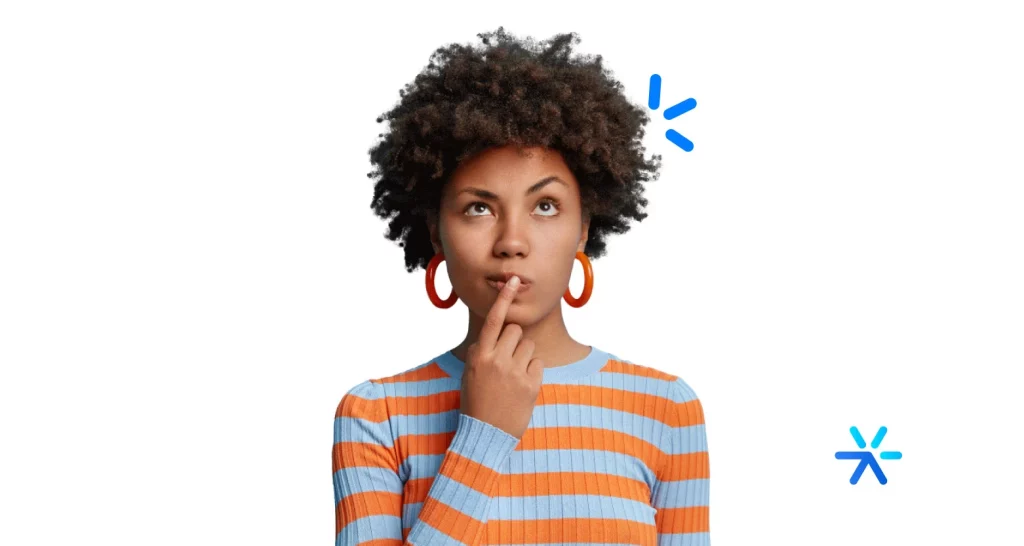
The positive aspects of Artificial Intelligence are numerous and depend on its use. I can find points you never imagined, and you can also discover others that I never thought of.
The same goes for its negative aspects. This is quite common in software that follows the SaaS methodology: the product evolves along with the possible uses found by users themselves.
At the same time, the advantages and disadvantages of Artificial Intelligence have significant social impacts. Nothing apocalyptic, but at the same time, nothing that can be ignored.
This mistake was made by practically all governments worldwide during the emergence of social media. There was no regulation or extensive research on the impacts on society and the real world. And they were quite significant.
Let’s delve a bit deeper into the advantages and disadvantages of artificial intelligence, looking at society as a whole?
Advantages of artificial intelligence
My hope and that of everyone familiar with the positive aspects of artificial intelligence are that the world becomes better with it.
Indeed, this is the hope of researchers and tech CEOs themselves.
But for that to happen, we need to reinforce AI’s qualities and always develop it in the right direction.
Now, let’s explore the social advantages that AI brings:
Work support
When AI supports work, it becomes simpler and can be done much faster.
We were just talking about Elis Regina’s VW commercial. By the way, let’s watch it below because it will be important:
Despite the controversies, the work was very well done. But it could also be done without any Artificial Intelligence. Artists together could conceptualize, model, and animate a 3D model of Elis Regina, including realistic movements with motion capture.
This is not news: if you don’t believe it, just watch The Lord of the Rings and see the work of visual artists in conceiving the character Gollum.
Computer graphics already existed, but the work would be much more costly, requiring more time and more professionals without Artificial Intelligence.
Without it, there would be no commercial. Not because it would be impossible to produce, but because it would be too much work and probably at a loss.
Support in learning
Let’s continue with practical examples?
GitHub recently launched its CoPilot tool, a programming partner that helps you detect bugs and in the act of coding itself.
For those who are learning, CoPilot works practically like a teacher. It can detect errors, explain what is wrong, and deliver the correct result.
And for experienced programmers, it does most of the hard work, leaving the programmer responsible only for being creative and thinking about the reality of their product.
Production of very expensive materials
Now think about Elis Regina’s commercial from another perspective: what if a beginner digital marketing agency wanted to produce a similar one?
We don’t even need to go that far — what if a small agency wanted to work with digital modeling with 4K rendering today?
Just the equipment to make this work viable would cost at least $10,000. And that’s a minimum. And professional animators would cost twice that, but per month.
Artificial Intelligence democratizes this type of work. Suddenly, small agencies can create commercials that can rival award-winning works in Cannes.
In fact, we can simplify even more: a commercial voiceover can cost thousands of dollars, depending on the amount of text. An AI can do the voice for a fraction of that price.
The democratization of the production of any type of material is one of the strongest points of AI. Entry barriers to creative fields are eroding very quickly.
But this also has its negative side. Let’s continue the conversation about the advantages and disadvantages of Artificial Intelligence now, but looking at the other side of the coin:
Disadvantages of artificial intelligence
Artificial intelligence also has some clear flaws. Many of them are actually related to its qualities.
Technology works that way. Often, it’s a double-edged sword. You need to see both sides of the coin to understand the gray area between the extremes.
Indeed, one of the disadvantages of artificial intelligence is precisely the other side of this democratization of material production.
Shall we delve deeper?
Ease in producing fake news
The problems that AI presents regarding Fake News were not created by it, just as the 3D animation of Elis Regina wasn’t either.
The problem is that achieving the scalability that AI offers was impossible. And even approaching that scale would be so costly that it wouldn’t be worth it.
With AI, it’s possible to create a blog with Fake News and publish hundreds of articles per day. And using recommendations given by the tool itself.
But this is one of the points most likely to be regulated. Right now, it’s impossible to produce excessively exaggerated Fake News using ChatGPT. But it’s possible to create an app without the restrictions that OpenAI imposed.
Labor risks
Another serious problem with Artificial Intelligence is the replacement of human labor. But for now, we’re not seeing the mass layoffs that ChatGPT “promised” to bring.
In quotes because this promise was never made by OpenAI or its developers. ChatGPT’s focus has always been that of a chatbot to help media and marketing professionals.
However, the decrease in job offers for roles that AI can replace from now on — from voice actors to scriptwriters, videomakers, photographers, etc. — may indeed decrease.
In fact, this is one of the reasons for the Hollywood screenwriters’ strike in 2023. And also the actors’ strike, which started in July.
The strikers in this case are demanding union protection not against complete replacement but against job misallocation. With AI, studios can create a script without humans involved, and then ask scriptwriters to only review it.
This is complicated for them because the amount to be received is lower. And AI would be trained with their work. In other words, studios use the work of the scriptwriter and will still pay less for their services from now on.
This point also touches on another issue we’re going to address now:
The controversy of plagiarism and copyright
When ChatGPT delivers an answer, whose text is it based on?
Or when Midjourney delivers an image, whose references did it use?
The question that remains is: were the references used protected by copyright? Today, if I put a copyrighted image on this blog you’re reading, Leadster as a company can be sued for copyright infringement.
But Midjourney, so far, is not. Why?
There are many questions with many answers. The issue is that there is no legislation in the whole world that makes sense for this situation.
To explain, many AI advocates use human artistic production as a parallel.
For example: if I open my notebook next to a Monica’s Gang magazine right now and use it as a reference (without copying anything!) to create an original comic strip, is it plagiarism?
If I use a digital comic strip to copy the yellow of Magali’s dress and use it in another unrelated project, would anyone know that I used this color? Is it plagiarism?
No, it’s not. So why would Midjourney, which does the same thing, be committing plagiarism?
This defense makes sense in general cases and when the original author is not harmed in the process. Now imagine using all the features of all an artist’s works in an AI and asking for a similar drawing. The situation becomes much more nebulous.
And this is already happening, including with lawsuits. Along with Fake News, the issue of plagiarism will probably be one of the first regulations of AI to emerge.
***
This is a super interesting topic to discuss, but also very difficult to reach a consensus.
This is because it not only involves the positive aspects of Artificial Intelligence but a series of questions.
You can forget about them for now in your practical uses. All of this will be discussed, and eventually, we will be able to develop ethical, reliable, and useful AIs for humanity.
We have many points where it can help and where we need help. With the right research and a bit of luck, we’ll get there together.
Thank you for reading. See you in the next article 😉


